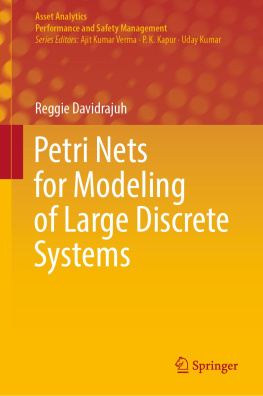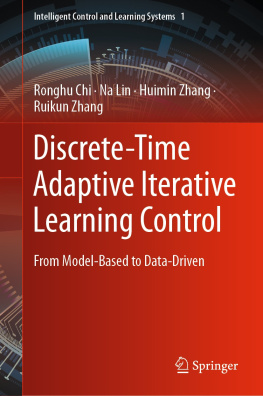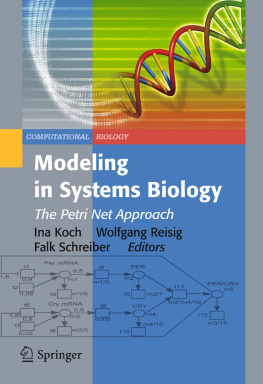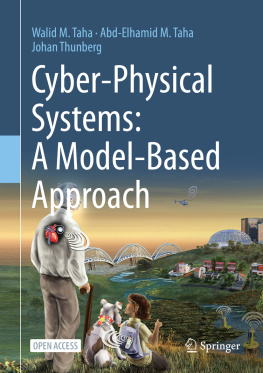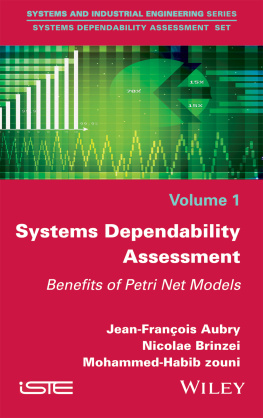Reggie Davidrajuh - Petri Nets for Modeling of Large Discrete Systems
Here you can read online Reggie Davidrajuh - Petri Nets for Modeling of Large Discrete Systems full text of the book (entire story) in english for free. Download pdf and epub, get meaning, cover and reviews about this ebook. publisher: Springer Singapore, genre: Computer. Description of the work, (preface) as well as reviews are available. Best literature library LitArk.com created for fans of good reading and offers a wide selection of genres:
Romance novel
Science fiction
Adventure
Detective
Science
History
Home and family
Prose
Art
Politics
Computer
Non-fiction
Religion
Business
Children
Humor
Choose a favorite category and find really read worthwhile books. Enjoy immersion in the world of imagination, feel the emotions of the characters or learn something new for yourself, make an fascinating discovery.
- Book:Petri Nets for Modeling of Large Discrete Systems
- Author:
- Publisher:Springer Singapore
- Genre:
- Rating:3 / 5
- Favourites:Add to favourites
- Your mark:
- 60
- 1
- 2
- 3
- 4
- 5
Petri Nets for Modeling of Large Discrete Systems: summary, description and annotation
We offer to read an annotation, description, summary or preface (depends on what the author of the book "Petri Nets for Modeling of Large Discrete Systems" wrote himself). If you haven't found the necessary information about the book — write in the comments, we will try to find it.
Petri Nets for Modeling of Large Discrete Systems — read online for free the complete book (whole text) full work
Below is the text of the book, divided by pages. System saving the place of the last page read, allows you to conveniently read the book "Petri Nets for Modeling of Large Discrete Systems" online for free, without having to search again every time where you left off. Put a bookmark, and you can go to the page where you finished reading at any time.
Font size:
Interval:
Bookmark:
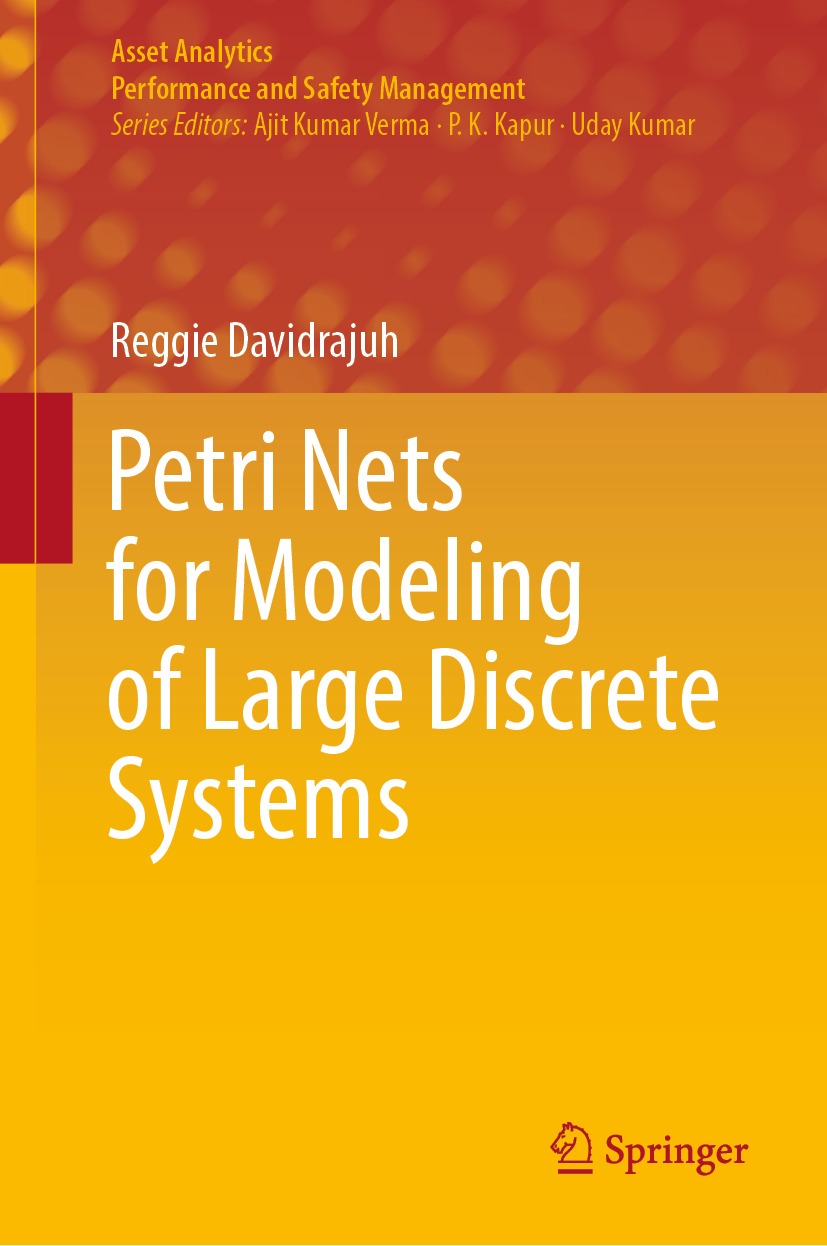
The main aim of this book series is to provide a floor for researchers, industries, asset managers, government policy makers and infrastructure operators to cooperate and collaborate among themselves to improve the performance and safety of the assets with maximum return on assets and improved utilization for the benefit of society and the environment.
Assets can be defined as any resource that will create value to the business. Assets include physical (railway, road, buildings, industrial etc.), human, and intangible assets (software, data etc.). The scope of the book series will be but not limited to:
Optimization, modelling and analysis of assets
Application of RAMS to the system of systems
Interdisciplinary and multidisciplinary research to deal with sustainability issues
Application of advanced analytics for improvement of systems
Application of computational intelligence, IT and software systems for decisions
Interdisciplinary approach to performance management
Integrated approach to system efficiency and effectiveness
Life cycle management of the assets
Integrated risk, hazard, vulnerability analysis and assurance management
Adaptability of the systems to the usage and environment
Integration of data-information-knowledge for decision support
Production rate enhancement with best practices
Optimization of renewable and non-renewable energy resources
More information about this series at http://www.springer.com/series/15776

This Springer imprint is published by the registered company Springer Nature Singapore Pte Ltd.
The registered company address is: 152 Beach Road, #21-01/04 Gateway East, Singapore 189721, Singapore
This book is dedicated to my family:
my wife Ruglin
and
my daughter Ada
It gives me great pleasure to write a foreword for this wonderful book on Petri nets and an innovative approach to handling huge Petri net models using distributed computing so as to enable them to be fast enough for real-time control applications. Petri nets are handy for modeling discrete event systems. However, they suffer from some weaknesses, e.g., massive size, huge state space, and slow simulation. Due to the enormous state space, model checking a Petri net is difficult. Also, Petri nets are difficult to be used for real-time applications due to the slowness in simulation. Thus, this book suggests modular Petri nets as a way of overcoming these difficulties.
In modular Petri nets, modules are designed, developed, and run independently. Also, the modules communicate with each other via inter-modular connectors. Hence, the bottom-up approach is suggested (starting with the modules and then combining them after thorough testing) for developing newer Petri net models. However, many Petri net models of real-life systems exist (legacy models), which are enormous and non-modular. These legacy models cannot be discarded as large amounts of time, effort, and money were spent developing these legacy models. In this case, the top-down approach is the only solution, which starts with the existing legacy models, decomposing them into modules, and then joining them together after testing them individually. This book presents both approaches centering around modules (known as Petri modules). Petri modules are well defined for inter-modular collaboration.
This book aims to introduce a methodology in which Petri nets are moved to a new level. In this new level, large Petri net models are made of Petri modules that are independent and run on different computers. Also, Petri modules communicate with each other using the inter-modular components (e.g., TCP/IP sockets). Thereby, the compact Petri modules run faster and, thus, become suitable for supervisory control of real-time systems.
This book focuses on Petri modules. This book presents the literature study on modular Petri nets and definitions for the newer Petri modules. Also, algorithms for extracting Petri modules and algorithms for connecting Petri modules and applications are given in this book. The ideas and algorithms proposed in this book are implemented in the software General-purpose Petri net Simulator (GPenSIM, developed by the author of this book). Hence, real-life discrete event systems could be modeled, analyzed, and performance-optimized with GPenSIM.
I congratulate Prof. Davidrajuh for bringing out this highly technical book in a very lucid manner and welcome this book as a valuable addition to the Springer series on Asset Analytics.
Cyber-physical systems involve hardware and software that are highly interconnected and complex. Unexpected failures in these systems can cause material damages, cost a lot of money and reputation, and can risk human lives too. The correct way of avoiding unexpected failures is to make a mathematical model of the system and to perform exhaustive analysis on it. Also, mathematical models are inevitable for performance analysis of the systems (e.g., finding throughput and bottlenecks) and to plan for extensions (e.g., measuring cost over performance factor).
Font size:
Interval:
Bookmark:
Similar books «Petri Nets for Modeling of Large Discrete Systems»
Look at similar books to Petri Nets for Modeling of Large Discrete Systems. We have selected literature similar in name and meaning in the hope of providing readers with more options to find new, interesting, not yet read works.
Discussion, reviews of the book Petri Nets for Modeling of Large Discrete Systems and just readers' own opinions. Leave your comments, write what you think about the work, its meaning or the main characters. Specify what exactly you liked and what you didn't like, and why you think so.

